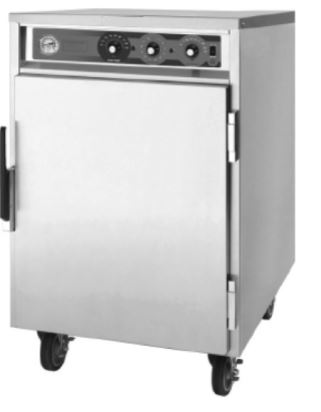Project Info
COMPLETE
 Project Title
Project Title
 Project Title
Project Title
Rethermalizers for Foodservice Applications
Project Number ET13SCE1210 Organization SCE End-use Process Loads Sector Commercial Project Year(s) 2014 - 2016Description
Rethermalization ovens or “Retherms” are heated cabinets used to reheat previously prepared, stored and chilled food product to serving temperature all while retaining the food product’s color, flavor, texture and nutrients. Retherms are popular among schools, hospitals, prisons, and other institutional facilities that use centralized kitchens to mass produce food product that can be reheated for fast and easy service. Retherms have low emissions and, therefore, do not require a ventilation hood. As a result, retherms are increasingly popular due to lower upfront capital investment compared to a full commercial cook line. The main cavity is accessed by doors leading to a heated cabinet. They can be factory configured to hold pans or baskets depending on customer preference. This project assesses the energy efficiency level of five retherm ovens and seeks to determine an appliance baseline and a minimum energy efficiency level necessary to qualify for the food service qualifying product list. The food service qualifying product list identifies the most efficient commercial kitchen appliances within a specific appliance category. The qualifying appliances are eligible to receive incentives for their use.
Project Report Document
Loading PDF Preview...
